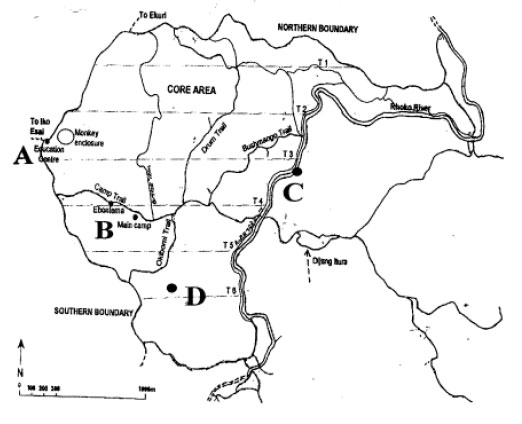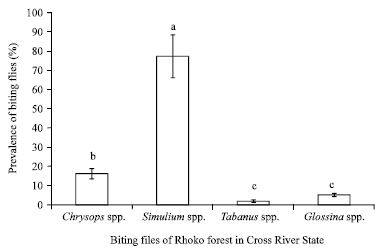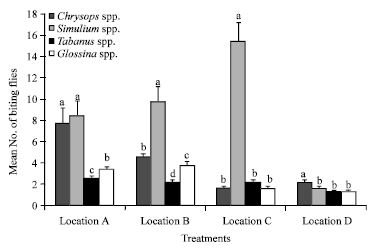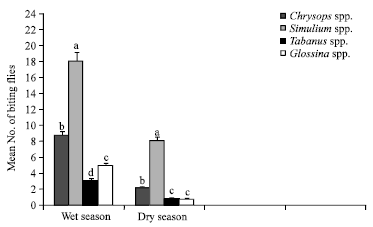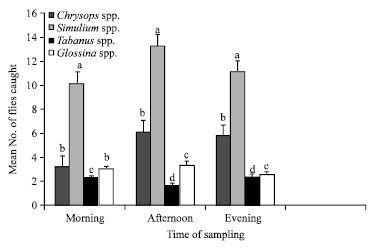Research Article
Prevalence and Seasonal Distribution of Daytime Biting Diptera in Rhoko Forest in Akamkpa, Cross River State, Nigeria
Department of Zoology and Environmental Biology, University of Calabar, P.M.B. 1115, Calabar, Nigeria
Donald A. Ukeh
Department of Crop Science, University of Calabar, P.M.B. 1115, Calabar, Nigeria
Nsa E. Dada
Department of Zoology and Environmental Biology, University of Calabar, P.M.B. 1115, Calabar, Nigeria









